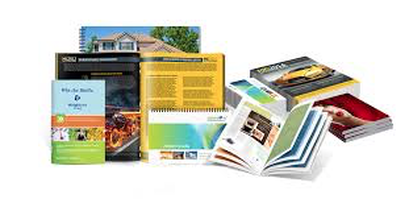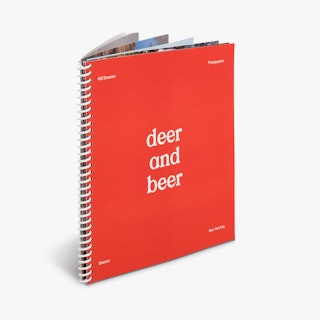What Every Marketer Should Know About Interactive Booklet Printing
What Every Marketer Should Know About Interactive Booklet Printing
Blog Article
The Necessary Overview to Comprehending Brochure Printing Options and Techniques
The process of pamphlet printing entails multiple considerations that can greatly influence the end product. From selecting the appropriate layout and dimension to comprehending the nuances of binding approaches, each selection plays a crucial function. Additionally, factors such as paper supply and printing methods further influence the performance of the brochure. As one browses these choices, it ends up being vital to understand just how they interconnect and what that means for the general outcome.
Recognizing Booklet Layouts and Dimensions
When considering brochure printing, understanding the different formats and dimensions available is vital for achieving the preferred discussion. Pamphlets can be produced in various layouts, consisting of saddle-stitched, spiral-bound, and perfect-bound, each offering distinct advantages. Typical dimensions vary from basic letter (8.5 x 11 inches) to smaller sized options like A5 (5.8 x 8.3 inches), enabling flexibility based upon web content and target audience.Selecting the ideal dimension can influence both the design and viewers engagement. Larger sizes may match aesthetically driven material, while smaller sized layouts might be much more straightforward and mobile. In addition, the number of web pages impacts the selection of binding technique, as thicker booklets may need tougher bindings. Inevitably, recognizing these elements permits an extra tailored method, ensuring that the end product lines up with the intended message and visual, boosting the overall efficiency of the interaction.
Picking the Right Paper Stock

Binding Methods: Factors To Consider and alternatives
When it concerns binding techniques for pamphlets, a number of alternatives are available, each with unique benefits. Saddle stitch binding supplies an affordable remedy for thinner booklets, while ideal binding methods give an even more polished seek thicker magazines. Wire-O binding attracts attention for its durability and ease of use, making it suitable for files that call for flexibility.
Saddle Stitch Binding
Saddle stitch binding uses a sensible and cost-effective service for putting together brochures, making it a prominent choice among publishers and services. This binding technique involves folding sheets of paper in half and stapling them along the fold line, creating a neat and organized look. Normally appropriate for booklets with a reduced web page count, saddle stitching is excellent for magazines, brochures, and educational products. The simplicity of this technique enables fast manufacturing and is commonly preferred for advertising things or short runs. However, it is essential to keep in mind that saddle stitch binding might not be appropriate for thicker booklets, as the spine might not hold up under increased weight. Generally, it remains a dependable alternative for several printing jobs.
Perfect Binding Techniques
Perfect binding is an extensively utilized technique that gives a refined and professional coating to brochures and publications. This technique includes gluing the pages with each other at the back utilizing a solid adhesive, enabling for a clean side and the capability to hold a bigger number of web pages compared to saddle sewing. Perfect binding is especially appropriate for thicker booklets, such as directories and yearly reports, where a tough, flat spine is preferred. Additionally, it provides the alternative for a printed cover that can be developed to enhance visual charm. However, factors to consider such as web page count, paper weight, and the planned use of the brochure need to be taken into consideration, as they can impact durability and general top quality.
Wire-O Binding Alternatives
Wire-O binding, known for its resilience and versatility, uses a superb option for brochures that need simple page turning and an expert appearance. This binding method utilizes a series of metal loops that hold pages firmly, allowing them to lie flat when open. It is specifically suitable for presentations, manuals, and brochures due to its robust nature. Wire-O binding is available in various shades and sizes, fitting different page matters and densities. Additionally, it permits the inclusion of tabs and covers, boosting the pamphlet's general aesthetic. Considerations for Wire-O binding consist of the choice of wire shade, the size of the loops, and the level of modification preferred, all of which can profoundly affect the end product's appearance and capability.
Digital vs. Offset Printing: Which Is Best for You?
When choosing a printing approach for pamphlets, recognizing the differences in between digital and offset printing is essential. Digital printing utilizes modern-day technology to produce high-grade prints swiftly and affordably, making it perfect for short runs or tasks needing fast turnaround times. It enables modification, supplying the ability to publish on-demand with minimal waste.In contrast, counter printing is a standard technique that succeeds in creating huge quantities with regular quality. It includes moving ink from a plate to a rubber blanket, after that to the paper, which results in lively colors and exact details. However, balance out printing typically needs longer arrangement times and is much more economical for bigger volumes.Ultimately, the option in between electronic and offset printing depends upon task requirements, spending plan, and desired amount. For tiny, time-sensitive tasks, electronic may be the most effective choice, while offset may be more effective for bigger, high-quality productions.

Designing Your Brochure: Tips and Finest Practices
When developing a booklet, careful focus to layout, font choice, and color use can greatly enhance its efficiency. A well-structured layout overviews the visitor's eye, while suitable fonts guarantee readability and share the wanted tone. Furthermore, reliable usage of color can stimulate feelings and highlight key details, making the general design much more impactful.
Picking the Right Design
How can one properly select the right format for a booklet? Initially, it is necessary to assess the booklet's function and target audience. A clean, arranged design boosts readability and engagement. Making use of a grid system can aid in straightening elements continually, creating a specialist look. Additionally, integrating aesthetic pecking order via varying dimensions and placements of photos and text can assist the reader's eye and highlight key details. It is also crucial to leave enough white space, which protects against overcrowding and enables far better focus. Ultimately, checking different designs through mock-ups can supply understanding into exactly how the layout does in real-world scenarios, guaranteeing that the end product meets both practical and visual needs.
Picking Appropriate Fonts
A well-chosen font style can considerably boost the general style of a pamphlet, enhancing the format and enhancing the web content's message. The choice of font styles must take into consideration readability, specifically for body message, as it assures the details is easily accessible to all visitors. Sans-serif font styles are commonly favored for electronic styles, while serif font styles can provide a standard feeling in printed materials. It's advisable to restrict font options you can try here to 2 or 3 to keep aesthetic coherence. Additionally, typeface dimension plays a vital function; headings must be unique but not frustrating, while body message ought to fit for analysis. When selecting font styles, positioning with the booklet's motif and target market is vital for effective communication and aesthetic allure.
Efficient Use Color
Shade acts as a powerful device in brochure design, forming perceptions and assisting visitor emotions. It can stimulate feelings of trust fund, excitement, or peace, relying on the shades picked. Designers need to think about shade concept principles, guaranteeing that the picked palette straightens with the booklet's message and target audience. For circumstances, making use of warm colors like red and orange can create seriousness, while cooler tones like blue and environment-friendly foster tranquility.Additionally, contrast plays an important function; corresponding shades can enhance readability and visual allure. Consistency in color use throughout web pages better strengthens brand identification and cohesion. Inevitably, reliable shade execution not just records focus but also reinforces the booklet's purpose, making it a necessary element of effective layout.
Completing Touches: Coatings and Special Impacts
While numerous consider the content and format of a booklet the most critical elements, the ending up touches, such as layers and unique impacts, play a crucial duty in boosting its general appeal. Coatings can provide defense and longevity, guaranteeing that the booklet withstands damage. Matte coatings provide a sophisticated, non-reflective surface area, while glossy finishes can make shades appear more vibrant and eye-catching. Unique effects, like embossing or aluminum foil stamping, add a responsive dimension that can develop an unforgettable impression. These strategies can highlight certain areas, accentuating important details or creating aesthetic interest. In addition, UV finishing can offer a high-shine coating that raises the total look.Together, these completing touches not just enhance the pamphlet's visual however additionally interact professionalism and focus to detail, eventually leaving a lasting influence on the reader.
Expense Factors To Consider for Booklet Printing
Recognizing the various expense factors to consider for booklet printing is crucial for companies and companies intending to optimize their budget plans. Secret factors influencing expenses consist of the selection of paper, ink, and binding techniques. Greater top quality materials, such as premium paper or specialized inks, normally enhance the total cost. Additionally, the size and page count of the brochure play a considerable function; larger booklets call for more resources and time to produce.Another crucial factor to consider is the printing strategy, whether electronic or offset, as each has its own pricing framework and viability for various amounts. Organizations should also factor in design costs, which can vary based on complexity and using professional services. Eventually, shipping and handling costs can contribute to the overall, especially for large orders. By examining these aspects, organizations can make educated decisions that align with their monetary abilities while accomplishing the preferred high quality in their printed materials.
Regularly Asked Inquiries
What Are the Ecological Influences of Pamphlet Printing?
The environmental impacts of booklet printing consist of deforestation from paper production, carbon exhausts from transport, and waste generation from disposed of materials - Booklet Printing. Lasting techniques, such as utilizing recycled paper and green inks, can alleviate these effects
Exactly How Can I Make Certain Shade Precision in My Pamphlet?
To guarantee color precision in a pamphlet, one ought to make use of adjusted screens, utilize professional color profiles, carry out test prints, and select high-quality printing solutions that provide shade matching and proofing options for finest outcomes.
What Is the Regular Turnaround Time for Brochure Printing?
The common turnaround time for booklet printing differs depending on the complexity and quantity - Booklet Printing. Generally, her comment is here it ranges from a couple of days to two weeks, affected by elements such as publishing methods and finishing needs
Exist Minimum Order Quantities for Pamphlet Printing?

Can I Publish Pamphlets in Several Languages?
Printing booklets in several languages is possible. Numerous printing solutions provide choices for multilingual or multilingual formats, permitting effective communication. Cautious preparation warranties that develop aspects suit various languages without jeopardizing readability or aesthetics. Additionally, factors such as paper supply and printing strategies further influence the performance click to investigate of the pamphlet. When considering brochure printing, comprehending the numerous formats and sizes readily available is necessary for attaining the desired presentation. When picking a printing method for booklets, comprehending the differences between digital and counter printing is essential. In addition, the size and web page matter of the booklet play a considerable function; larger pamphlets call for even more sources and time to produce.Another crucial consideration is the printing method, whether electronic or countered, as each has its very own prices framework and suitability for various quantities. The environmental effects of pamphlet printing include deforestation from paper production, carbon exhausts from transportation, and waste generation from thrown out materials.
Report this page